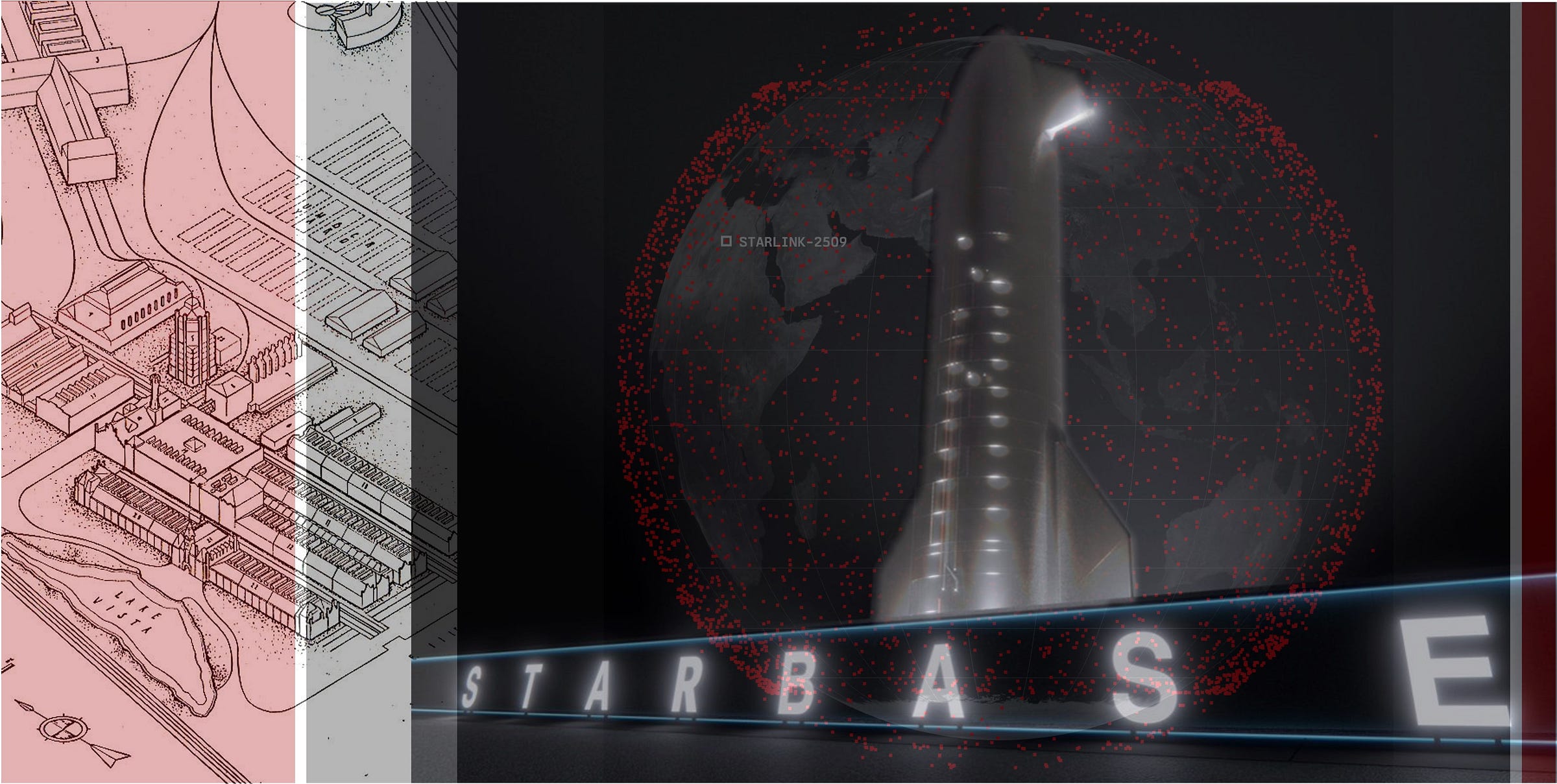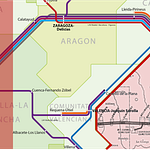Hello Interactors,
I was in Santa Barbara recently having dinner on a friend’s deck when a rocket’s contrail streaked the sky. “Another one from Vandenberg,” he said. “Wait a couple minutes — you’ll hear it.” And we did. “They’ve gotten really annoying,” he added. He’s not wrong. In early 2024, SpaceX launched seven times more tonnage into space than the rest of the world combined, much of it from Vandenberg Space Force Base (renamed from Air Force Base in 2021). They’ve already been approved to fly 12,000 Starlink satellites, with filings for 30,000 more.
This isn’t just future space junk — it’s infrastructure. And it’s not just in orbit. What Musk is doing in the sky is tied to what he’s building on the ground. Not in Vandenberg, where regulation still exists, but in Starbase, Texas, where the law doesn’t resist — it assists. There, Musk is testing how much sovereignty one man can claim under the banner of “innovation” — and how little we’ll do to stop him.
TOWNS TO THRUST AND THRONE
Musk isn’t just defying gravity — he’s defying law. In South Texas, a place called Starbase has taken shape along the Gulf Coast, hugging the edge of SpaceX’s rocket launch site. What looks like a town is really something else: a launchpad not just for spacecraft, but for a new form of privatized sovereignty.
VIDEO: Time compresses at the edge of Starbase: a slow-built frontier where launch infrastructure rises faster than oversight. Source: Google Earth
This isn’t unprecedented. The United States has a long lineage of company towns — places where corporations controlled land, housing, labor, and local government. Pullman, Illinois is the most famous. But while labor historians and economic geographers have documented their economic and social impact, few have examined them as legal structures of power.
That’s the gap legal scholar Brian Highsmith identifies in Governing the Company Town. That omission matters — because these places aren’t just undemocratic. They often function as quasi-sovereign legal shells, designed to serve capital, not people.
Incorporation is the trick. In Texas, any area with at least 201 residents can petition to become a general-law municipality. That’s exactly what Musk has done. In a recent vote (212 to 6) residents approved the creation of an official town — Starbase. Most of those residents are SpaceX employees living on company-owned land…with a Tesla in the driveway. The result is a legally recognized town, politically constructed. SpaceX controls the housing, the workforce, and now, the electorate. Even the mayor is a SpaceX affiliate. With zoning powers and taxing authority, Musk now holds tools usually reserved for public governments — and he’s using them to build for rockets, not residents…unless they’re employees.
VIDEO: Starbase expands frame by frame, not just as a company town, but as a legal experiment — where land, labor, and law are reassembled to serve orbit over ordinance. Source: Google Earth
Quinn Slobodian, a historian of neoliberalism and global capitalism, shows how powerful companies and individuals increasingly use legal tools to redesign borders and jurisdictions to their advantage. In his book, Cracked Up Capitalism, he shows how jurisdiction becomes the secret weapon of the capitalist state around the world. I wrote about a techno-optimist fantasy state on the island of Roatán, part of the Bay Islands in Honduras a couple years ago.
It isn’t new. Disney used the same playbook in 1967 with Florida’s Reedy Creek District — deeding slivers of land to employees to meet incorporation rules, then governing without real opposition. Highsmith draws a straight line to Musk: both use municipal law not to serve the public, but to avoid it. In Texas, beach access is often blocked near Starbase — even when rockets aren’t launching. A proposed bill would make ignoring an evacuation order a Class B misdemeanor, punishable by jail.

Even if Starbase never fully resembles a traditional town, that’s beside the point. What Musk is really revealing isn’t some urban design oasis but how municipal frameworks can still be weaponized for private control. Through zoning laws, incorporation statutes, and infrastructure deals, corporations can shape legal entities that resemble cities but function more like logistical regimes.
And yet, this tactic draws little sustained scrutiny. As Highsmith reminds us, legal scholarship has largely ignored how municipal tools are deployed to consolidate corporate power. That silence matters — because what looks like a sleepy launch site in Texas may be something much larger: a new form of rule disguised as infrastructure.
ABOVE THE LAW, BELOW THE LAND
Elon Musk isn’t just shaping towns — he’s engineering systems. His tunnels, satellites, and rockets stretch across and beyond traditional borders. These aren’t just feats of engineering. They’re tools of control designed to bypass civic oversight and relocate governance into private hands. He doesn’t need to overthrow the state to escape regulation. He simply builds around it…and in the case of Texas, with it.
Architect and theorist Keller Easterling, whose work examines how infrastructure quietly shapes political life, argues that these systems are not just supports for power — they are power. Infrastructure itself is a kind of operating system for shaping the city, states, countries…and now space.
Starlink, SpaceX’s satellite constellation, provides internet access to users around the world. In Ukraine, it became a vital communications network after Russian attacks on local infrastructure. Musk enabled access — then later restricted it. He made decisions with real geopolitical consequences. No president. No Congress. Just a private executive shaping war from orbit.
And it’s not just Ukraine. Starlink is now active in dozens of countries, often without formal agreements from national regulators. It bypasses local telecom laws, surveillance rules, and data protections. For authoritarian regimes, that makes it dangerous. But for democracies, it raises a deeper question: who governs the sky?
Right now, the answer is: no one. The Outer Space Treaty of 1967 assumes that nation-states, not corporations, are the primary actors in orbit. But Starlink functions in a legal grey zone, using low Earth orbit as a loophole in international law…aided and abetted by the U.S. defense department.
VIDEO: Thousands of Starlink satellites, visualized in low Earth orbit, encircle the planet like a privatized exosphere—reshaping global communication while raising questions of governance, visibility, and control. Source: Starlink
The result is a telecom empire without borders. Musk commands a growing share of orbital infrastructure but answers to no global regulator. The International Telecommunication Union can coordinate satellite spectrum, but it can’t enforce ethical or geopolitical standards. Musk alone decides whether Starlink aids governments, rebels, or armies. As Quinn Slobodian might put it, this is exception-making on a planetary scale.
Now let’s go underground. The Boring Company digs high-speed tunnels beneath cities like Las Vegas, sidestepping standard planning processes. These projects often exclude transit agencies and ignore public engagement. They’re built for select users, not the public at large. Local governments, eager for tech-driven investment, offer permits and partnerships — even if it means circumventing democratic procedures.
Taken together — Starlink above, Boring Company below, Tesla charging networks on the ground — Musk’s empire moves through multiple layers of infrastructure, each reshaping civic life without formal accountability. His systems carry people, data, and energy — but not through the public channels meant to regulate them. They’re not overseen by voters. They’re not authorized by democratic mandate. Yet they profoundly shape how people move, communicate, and live.
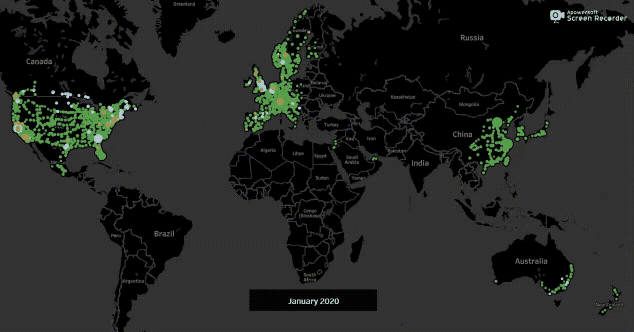
Geographer Deborah Cowen, whose research focuses on the global logistics industry, argues that infrastructure like ports, fiber-optic cables, and pipelines have become tools of geopolitical strategy. Logistics as a form of war by other means.
Brian Highsmith argues this is a form of “functional fragmentation” — breaking governance into layers and loopholes that allow corporations to sidestep collective control. These aren’t mere workarounds. They signal a deeper shift in how power is organized — not just across space, but through it.
This kind of sovereignty is easy to miss because it doesn’t always resemble government. But when a private actor controls transit systems, communication networks, and even military connectivity — across borders, beneath cities, and in orbit — we’re not just dealing with infrastructure. We’re dealing with rule.
And, just like with company towns, the legal scholarship is struggling to catch up. These layered, mobile, and non-territorial regimes challenge our categories of law and space alike. What these fantastical projects inspire is often awe. But what they should require is law.
AMNESIA AIDS THE AMBITIOUS
Elon Musk may dazzle with dreams full-blown, but the roots of his power are not his own. The United States has a long tradition of private actors ruling like governments — with public blessing. These aren’t outliers. They’re part of a national pattern, deeply embedded in our legal geography: public authority outsourced to private ambition.
The details vary, but the logic repeats. Whether it’s early colonial charters, speculative land empires, company towns, or special districts carved for tech campuses, American history is full of projects where law becomes a scaffold for private sovereignty. Rather than recount every episode, let’s just say from John Winthrop to George Washington to Walt Disney to Elon Musk, America has always made room for men who rule through charters, not elections.
Yet despite the frequency of these arrangements, the scholarship has been oddly selective.
According to Highsmith, legal academia has largely ignored the institutional architecture that makes company towns possible in the first place: incorporation laws, zoning frameworks, municipal codes, and districting rules. These aren't neutral bureaucratic instruments. They're jurisdictional design tools, capable of reshaping sovereignty at the micro-scale. And when used strategically, they can be wielded by corporations to create functional states-within-a-state — governing without elections, taxing without consent, and shaping public life through private vision.
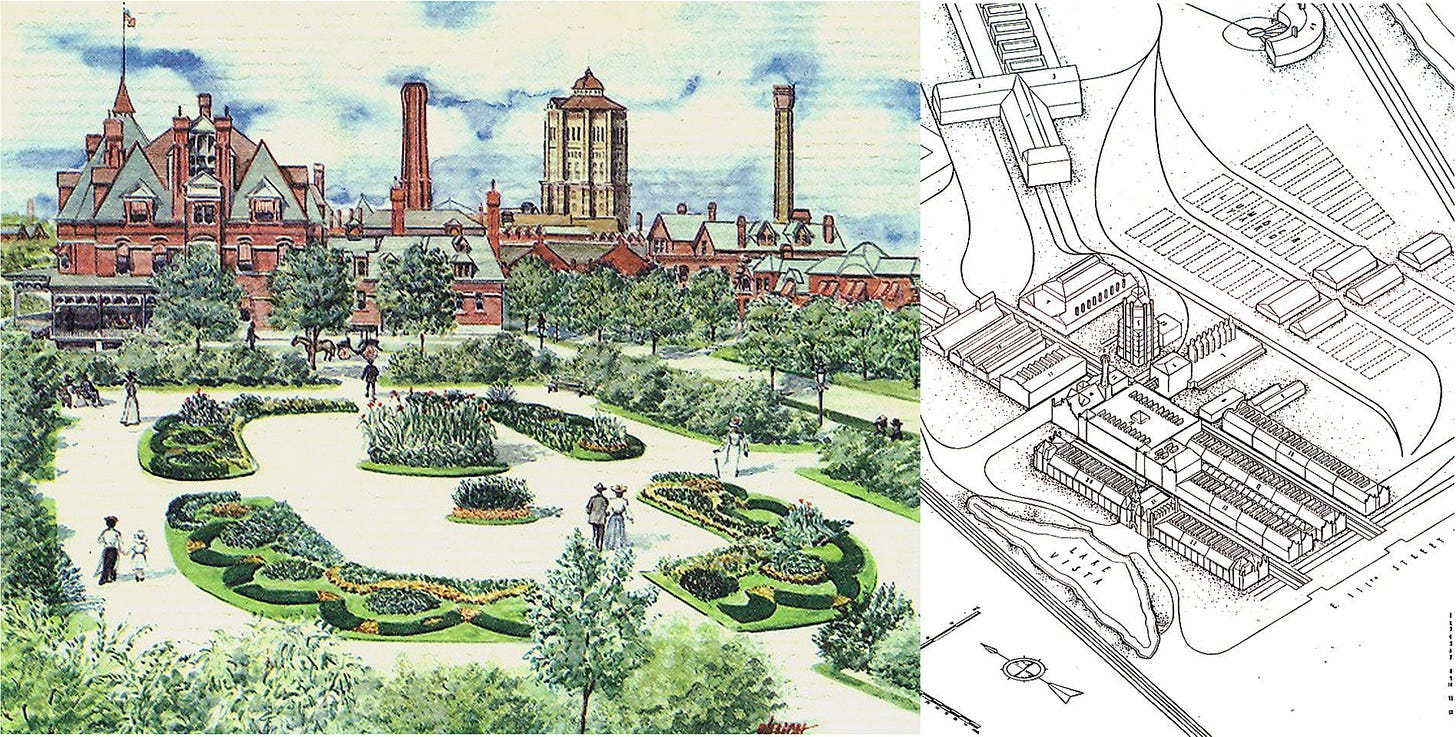
From a critical geography perspective, the problem is just as stark. Scholars have long studied the uneven production of space — how capital reshapes landscapes to serve accumulation. But here, space isn’t just produced — it’s governed. And it’s governed through techniques of legal enclosure, where a patch of land becomes a jurisdictional exception, and a logistics hub or tech campus becomes a mini-regime.
Starbase, Snailbrook, Reedy Creek, and even Google’s Sidewalk Labs are not just spatial projects — they're sovereign experiments in spatial governance, where control is layered through contracts, tax breaks, and municipal proxies.
But these arrangements don’t arise in a vacuum. Cities often aren’t choosing between public and private control — they’re choosing between austerity and access to cash. In the United States, local governments are revenue-starved by design. Most lack control over income taxes or resource royalties, and depend heavily on sales taxes, property taxes, and development fees. This creates a perverse incentive: to treat corporations not as entities to regulate, but as lifelines to recruit and appease.
Desperate for jobs and investment, cities offer zoning concessions, infrastructure deals, and tax abatements, even when they come with little democratic oversight or long-term guarantees. Corporate actors understand this imbalance — and exploit it. The result is a form of urban hostage-taking, where governance is bartered piecemeal in exchange for the promise of economic survival.
A more democratized fiscal structure — one that empowers cities through equitable revenue-sharing, progressive taxation, or greater control over land value capture — might reduce this dependency. It would make it possible for municipalities to plan with their citizens instead of negotiating against them. It would weaken the grip of corporate actors who leverage scarcity into sovereignty. But until then, as long as cities are backed into a fiscal corner, we shouldn’t be surprised when they sell off their power — one plot or parking lot at a time.
Highsmith argues that these structures demand scrutiny — not just for their economic impact, but for their democratic consequences. These aren't just quirks of local law. They are the fault lines of American federalism — where localism becomes a loophole, and fragmentation becomes a formula for private rule.
And yet, these systems persist with minimal legal friction and even less public awareness. Because they don’t always look like sovereignty. Sometimes they look like a housing deal. A fast-tracked zoning change. A development district with deferred taxes. A campus with private shuttles and subsidized utilities. They don't announce themselves as secessions — but they function that way.
We’ve been trained to see these projects as innovation, not governance. As entrepreneurship, not policy. But when a company owns the homes, builds the roads, controls the data, and sets the rules, it’s not just offering services — it’s exercising control. As political theorist Wendy Brown has argued, neoliberalism reshapes civic life around the image of the entrepreneur, replacing democratic participation with market performance.
That shift plays out everywhere: universities run like corporations, cities managed like startups. Musk isn’t the exception — he’s the clearest expression of a culture that mistakes private ambition for public good. Musk once tweeted, “If you must know, I am a utopian anarchist of the kind best described by Iain Banks.”
In a New York Times article, Jill Lepore quoted Banks as saying his science fiction books were about “’hippy commies with hyper-weapons and a deep distrust of both Marketolatry and Greedism.’ He also expressed astonishment that anyone could read his books as promoting free-market libertarianism, asking, ‘Which bit of not having private property and the absence of money in the Culture novels have these people missed?’”
The issue isn’t just that we’ve allowed these takeovers — it’s that we’ve ignored the tools enabling them: incorporation, annexation, zoning, and special districts. As Brian Highsmith notes, this quiet shift in power might not have surprised one of our constitution authors, James Madison, but it would have troubled him. In Federalist No. 10, Madison warned not of monarchs, but of factions — small, organized interests capturing government for their own ends. His solution was restraint through scaling oppositional voices.
“The inference to which we are brought is, that the causes of faction cannot be removed...and that relief is only to be sought in the means of controlling its effects.”
— James Madison, Federalist No. 10 (1787)
Today, the structure meant to restrain factions has become their playbook. These actors don’t run for office — they arrive with charters, contracts, and capital. They govern not in the name of the people, but of “efficiency” and “innovation.” And they don’t need to control a nation when a zoning board will do.
Unchecked, we risk mistaking corporate control for civic order — and repeating a pattern we’ve barely begun to name.
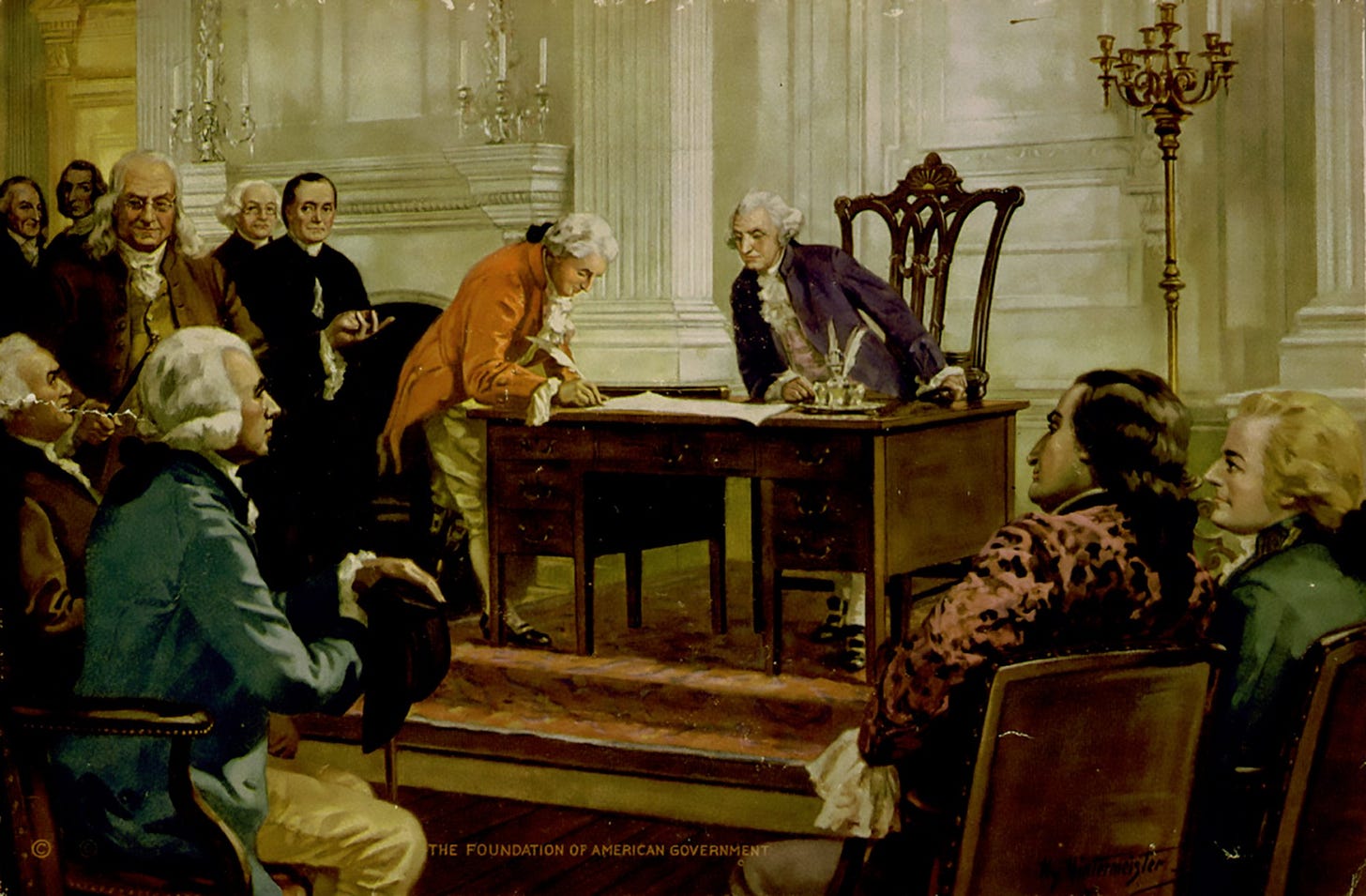
We were told, sold, and promised a universe of shared governance — political, spatial, even orbital. But Madison didn’t trust promises. He trusted structure. He feared what happens when small governments fall to powerful interests — when law becomes a lever for private gain. That fear now lives in legal districts, rocket towns, and infrastructure built to rule. Thousands of satellites orbit the Earth, not launched by publics, but by one man with tools once reserved for states. What was once called infrastructure now governs. What was once geography now obeys.
Our maps may still show roads and rails and pipes and ports — but not the fictions beneath them, or the factions they support.
References:
Brown, W. (2015). Undoing the demos: Neoliberalism’s stealth revolution. Zone Books.
Cowen, D. (2014). The deadly life of logistics: Mapping violence in global trade. University of Minnesota Press.
Easterling, K. (2014). Extrastatecraft: The power of infrastructure space. Verso Books.
Highsmith, B. (2022). Governing the company town: How employers use local government to seize political power. Yale Law Journal.
Madison, J. (1787). Federalist No. 10. In A. Hamilton, J. Madison, & J. Jay, The Federalist Papers. Bantam Books (2003 edition).
Slobodian, Q. (2023). Crack-Up Capitalism: Market radicals and the dream of a world without democracy. Metropolitan Books.



